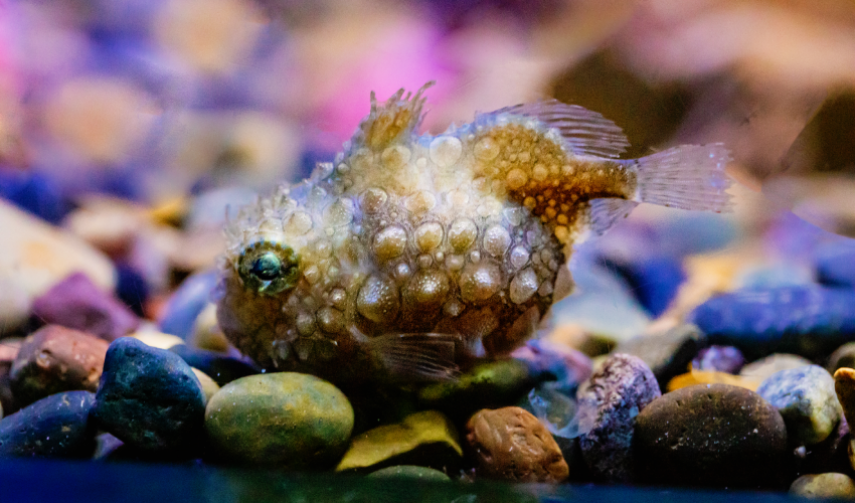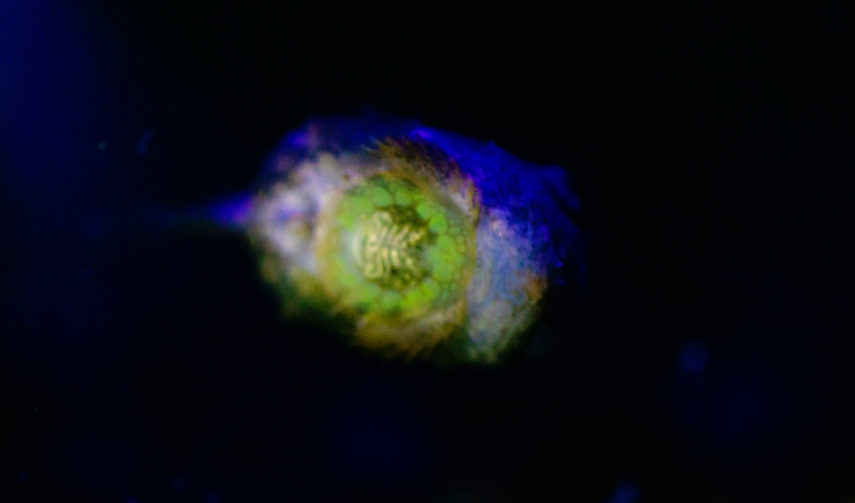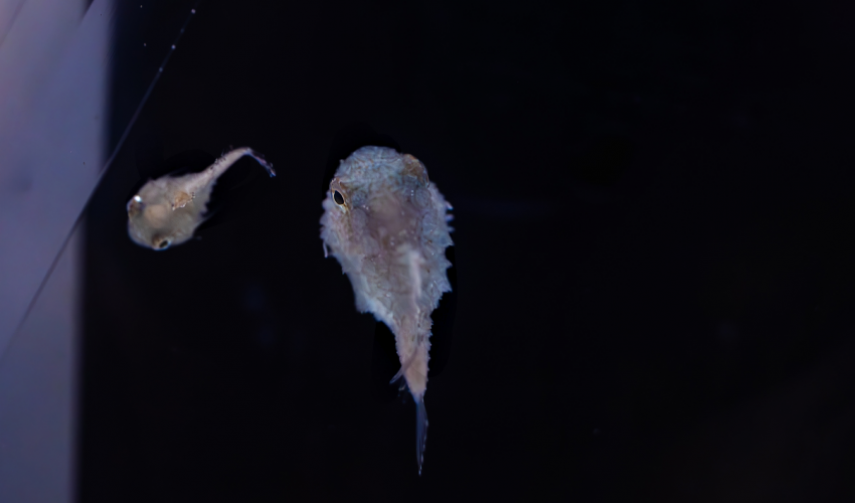Sometimes the most fascinating things come in the smallest sizes and Birch Aquarium’s Pacific Spiny Lumpsuckers are no exception. Imagine a ping-pong-ball-sized balloon covered in spikes with biofluorescent pelvic fins shaped like a small suction cup– and you’ve got a Pacific Spiny Lumpsucker! These fish have some unique adaptations for life in the Northern Pacific Ocean that make them an especially interesting animal to see in an aquarium.

Pacific Spiny Lumpsuckers are aptly named — they are covered in little spines, are round and “lump” shaped overall, and they sport a unique “sucker” adaptation on their undersides. This “sucker” is formed by their pelvic fins, which have adapted into a round, suction-cup shaped disc in order to anchor themselves by attaching to rocks, kelp and other things in their environment to help protect them from being swept away by ocean currents.

The “spine” in the Pacific Spiny Lumpsucker’s name comes from the round, armor-like plates that cover the fish’s body. While armor plates themselves are not unusual, what sets the lumpsucker apart from other armored fish is what the plates are actually made of — enamel, just like teeth. Newly hatched Pacific Spiny Lumpsuckers do not have these spikes, known as odontodes — they develop in rows along the fishes' bodies as the lumpsuckers grow into adulthood and are believed to be used as protection in their environment. Odontodes grow in tiny spiral patterns and do not seem to be repaired if damaged, with individual wear patterns developing on each fish throughout their lifetimes.

Pacific Spiny Lumpsuckers exhibit a trait called sexual dimorphism where the males and females of the same species have different physical characteristics. In the case of these lumpsuckers, the males are smaller and red in color, while the females are larger and green to brown. But perhaps the most interesting difference of all is that while both exhibit biofluorescence around their pectoral disc with a distinct green-yellow color, only the males biofluoresce over their entire bodies. Not only that, but males’ bodies bioflouresce red, creating a combination of red with green-yellow which has only been found in a handful of species worldwide so far.

Lumpsucker males, like Garibaldi, are also the ones who care for the eggs and protect the nest, which is often found in a small space like a barnacle or other available crevice. At Birch Aquarium, our Pacific Spiny Lumpsuckers have proven to be quite prolific. We have been able to share 275 lumpsuckers with other aquariums around the US, as well as two egg clusters, both of which hatched resulting in about 250 babies. These kinds of partnerships relieve pressure on wild Lumpsucker populations and allow more people to get to know these unique little fish.